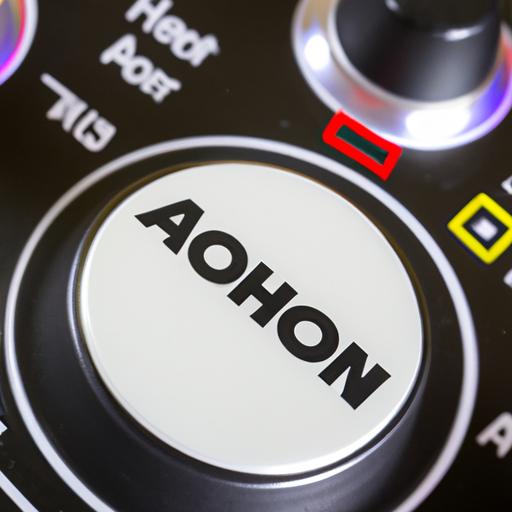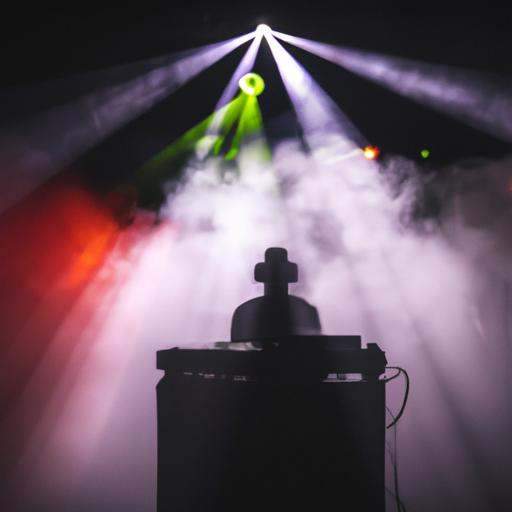Amplify Your DJ Skills with the Iconic DJ Airhorn Sound Effect
Introduction
Are you a DJ searching for ways to elevate your performance and take your music to new heights? Look no further than the DJ airhorn sound effect. This timeless and iconic sound effect has been a staple in the music industry for years, and for good reason. In this comprehensive guide, we’ll explore the world of airhorn sound effects and discover how they can enhance your DJing game.
Demystifying the DJ Airhorn Sound Effect
The DJ airhorn sound effect, originally derived from reggae and dancehall music in Jamaica, is a brief blast of a horn that mimics the sound of an airhorn. DJs use this effect to inject excitement and energy into their performances, signaling changes in the music or hyping up the crowd.
The Importance of Sound Effects in DJing
As a DJ, your ultimate goal is to keep the crowd engaged and entertained throughout your set. Sound effects are a powerful tool that can help you achieve this. They provide variety and excitement, ensuring that the audience remains captivated and enthralled.
Purpose of This Article
In this article, we will delve deeper into the world of airhorn sound effects. We will explore the history of the sound, how DJs use it, the best airhorn sound effects available, and even how to create your own. By the time you reach the end of this guide, you will possess all the knowledge and skills necessary to incorporate airhorn sound effects into your performances and take your DJing skills to unprecedented levels.
The Roots of the Airhorn Sound Effect

Origins of the Airhorn Sound Effect
The airhorn sound effect has its origins in Jamaican reggae and dancehall music, where it was initially used to emulate the sound of a boat horn. DJs in Jamaica incorporated the airhorn sound effect during live performances to indicate the entry of a new artist or to create a frenzy of excitement among the crowd.
The Sound Effect’s Influence on the Music Industry
The airhorn sound effect quickly gained popularity beyond Jamaica, becoming a staple in the global music industry. DJs from various genres, including hip hop, electronic dance music (EDM), and trap music, adopted this effect. Today, it is a ubiquitous sound effect employed in clubs, parties, and concerts worldwide.
Evolution of the Airhorn Sound Effect
Over time, DJs experimented with the airhorn sound effect, blending it with other sound effects such as sirens or gunfire to create unique combinations. Some DJs cleverly integrated the airhorn sound effect into specific parts of songs, building up anticipation before a drop. Despite its evolution, the airhorn sound effect remains a timeless classic, maintaining its popularity among DJs and music enthusiasts.
Airhorn Sound Effect: How DJs Utilize It
A. Innovative Applications of the Airhorn Sound Effect
The versatility of the airhorn sound effect allows DJs to utilize it in countless ways during their performances. One common application is using it as a transition between two songs, seamlessly changing the music and keeping the audience engaged. DJs also employ the airhorn sound effect to boost crowd excitement during build-ups or drops, creating an exhilarating surge of energy that gets everyone moving.
Another way DJs employ the airhorn is by emphasizing specific elements of a song. By highlighting memorable lyrics or beat drops, DJs create unforgettable moments for their audience.
B. Popular Music Genres that Embrace the Airhorn Sound Effect
Although the airhorn sound effect is most closely associated with reggae and dancehall music, it has become ubiquitous across various genres. DJs in hip hop use the airhorn to add hype to their performances, signaling musical changes and emphasizing impactful bars or verses.
In EDM, the airhorn sound effect is often deployed to create explosive moments during build-ups or drops, typically complemented by other sound effects like sirens or lasers. The result is a high-energy atmosphere that leaves the audience in a state of euphoria.
C. Enhancing the DJing Experience with the Airhorn Sound Effect
The airhorn sound effect functions as a powerful tool that adds a new dimension to a DJ’s performance. By generating excitement and energy within the crowd, DJs keep their audience engaged and entertained throughout their sets. Strategic use of the airhorn sound effect enables DJs to create unforgettable moments that leave a lasting impact, ensuring attendees keep returning for more.
Top Airhorn Sound Effects for DJs
As a DJ, searching for the perfect airhorn sound effect can be overwhelming. Fortunately, several reputable providers offer high-quality options, streamlining your quest for the ideal sound.
A. Leading Airhorn Sound Effect Providers
- DJ Tools
- SoundBible
- AudioMicro
- ZapSplat
- ProducerSpot
These providers offer a diverse range of airhorn sound effects, from classic to modern, catering to the requirements of any DJ. Additionally, they provide an assortment of other sound effects that can further deepen and diversify your set.
B. Popular Airhorn Sound Effect Samples
If you are not yet ready to invest in a sound effect pack, numerous popular airhorn sound effect samples can be found online for free. Some favored samples encompass:
- Classic airhorn sound effect
- Reggae airhorn sound effect
- Dubstep airhorn sound effect
- Hip-hop airhorn sound effect
- EDM airhorn sound effect
These samples are widely employed and recognized within the music industry, imbuing your set with a touch of nostalgia.
C. Selecting the Perfect Airhorn Sound Effect
When choosing an airhorn sound effect, factors such as the genre of music you will be playing and the overall atmosphere of your set should be considered. Classic airhorn sound effects suit reggae and dancehall music exceptionally well, while modern variations harmonize better with hip-hop and EDM.
Furthermore, it is crucial to select a sound effect that seamlessly integrates into your DJing style. Opt for concise and easily triggered sound effects, as lengthy samples can disrupt the flow of your set. By bearing these factors in mind, you will be empowered to choose the ideal airhorn sound effect that meets your DJing requirements and elevates your performances.
Crafting Your Own Airhorn Sound Effect
Are you yearning to develop a personalized airhorn sound effect that sets you apart from other DJs? Fear not, for we have a step-by-step guide to help you achieve just that.
Tools Required for Creating an Airhorn Sound Effect
To begin your journey towards creating a unique airhorn sound effect, you will need the following tools:
- A digital audio workstation (DAW) software
- A MIDI controller or keyboard
- An airhorn sound effect sample (optional)
Step-by-Step Process for Creating an Airhorn Sound Effect
- Launch your DAW software and initiate a new project.
- Add a software instrument track and choose a synthesizer plugin.
- Select a sawtooth waveform and adjust envelope settings to shape a short, sharp sound.
- Program a MIDI note in your desired key and duration to trigger the sound.
- Fine-tune the sound by modifying envelope settings, adding distortion, or incorporating effects like reverb or delay.
- Save the sound as a preset for future use.
Tips for Crafting a Unique Airhorn Sound Effect
- Experiment with different waveforms and envelope settings to generate a sound that complements your unique style.
- Add distortion or other effects to imbue the sound with character.
- Layer multiple sounds to construct a more intricate airhorn sound effect.
- Consider incorporating your own voice or other distinctive sounds to create a one-of-a-kind airhorn sound effect that truly reflects your artistry.
By following these steps and embracing your creativity, you will successfully devise a personalized airhorn sound effect that imparts a distinctive touch to your performances, setting you apart from other DJs.
In Conclusion
In conclusion, the DJ airhorn sound effect remains an illustrious tool that can propel your DJing skills to new heights. By infusing excitement and energy into your performances, airhorn sound effects keep your audience engaged and entertained throughout your set.
Throughout this article, we unraveled the history of the airhorn sound effect, explored how DJs employ it, discovered the best airhorn sound effects available, and even learned how to create our own. By assimilating the tips and techniques outlined in this guide, you are guaranteed to astonish your audience and stand out from the crowd.
Remember, the key to utilizing airhorn sound effects effectively lies in using them judiciously and deliberately. While powerful, an excessive amount of airhorn sound effects can quickly overwhelm. Apply them strategically to elevate your performance and maintain active engagement with your crowd.
So, what are you waiting for? Incorporate airhorn sound effects into your next set and observe the transformative impact they can unleash. Armed with this guide, you are well on your way to mastering the DJ airhorn sound effect.

